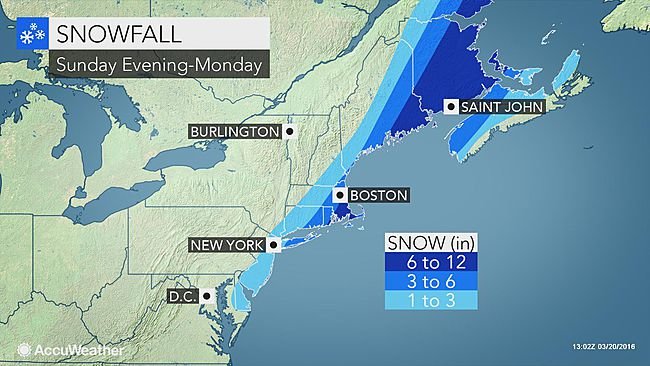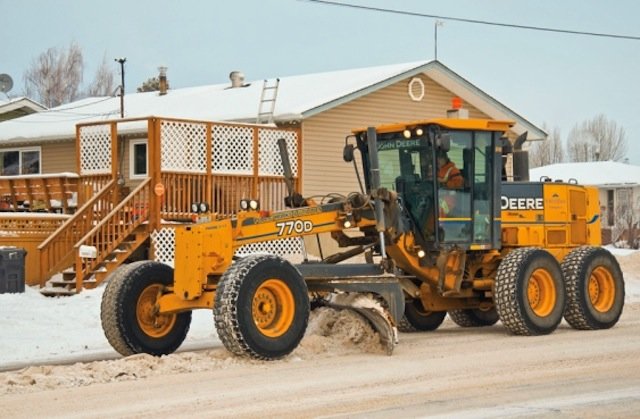
© AccuWeather
With the first day of spring ending up colder than Christmas Day, the stage is set for disruptive snow to ride up the coast of the northeastern United States Sunday evening into Monday.
After wet snow in the mid-Atlantic struggles to stick to roads, the threat of snow-covered roads will heighten Sunday evening into Monday as an offshore storm begins to strengthen and cause moderate to heavy snow along the Northeast coast.
As the snow along the coast unfolds Sunday evening, a couple of inches of snow will create slick spots in the southern Appalachian Mountains.
The snow will increase as it
spreads up the Northeast coast, leading to totals of around an inch on grassy surfaces in Delaware to
travel-disrupting amounts approaching or exceeding six inches in eastern Long Island and far eastern New England.
The heaviest amounts will be measured on grassy and elevated surfaces, but motorists should prepare for roads to still become slick. This includes in Islip and Montauk, New York; Providence, Rhode Island;
Boston and Plymouth, Massachusetts; and Portland and Bangor, Maine.
In Boston, snow totals will be greatest toward the South Shore with less in the northern and western suburbs.
"When temperatures fall after sunset, bridges and overpasses will be the first surfaces to see snow accumulate, which may sneak up on drivers experiencing otherwise wet roads," AccuWeather Meteorologist Brian Thompson said.
AccuWeather Meteorologist Jim Andrews also warned of persistently shaded areas being among the first surfaces to turn slick.

Comment: Mexico enduring the coldest winter in its history